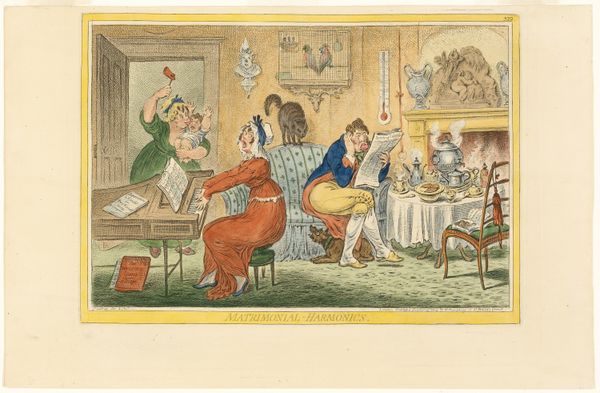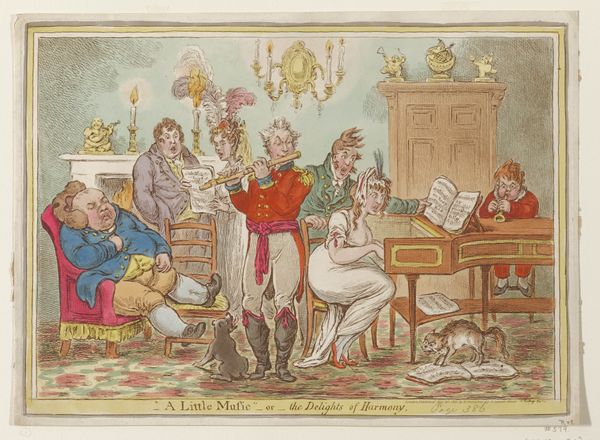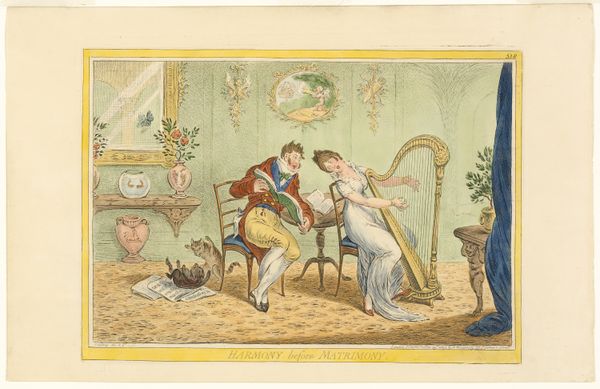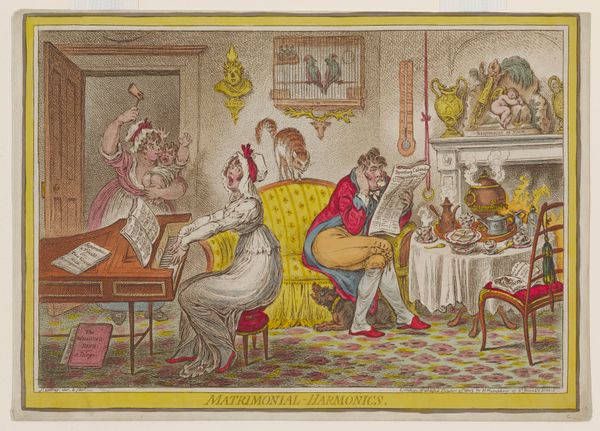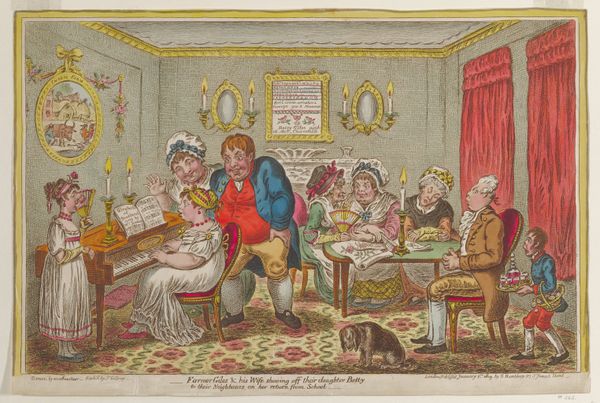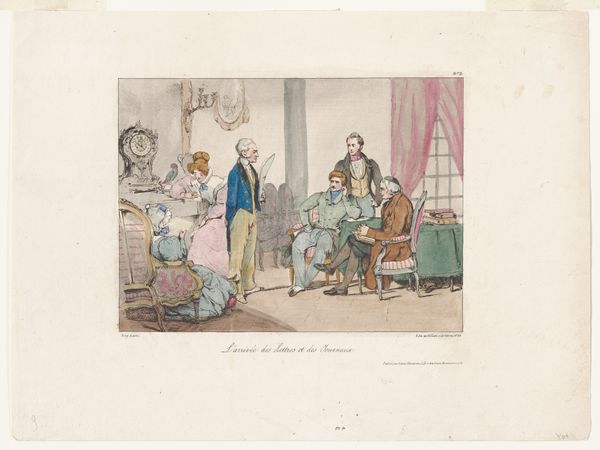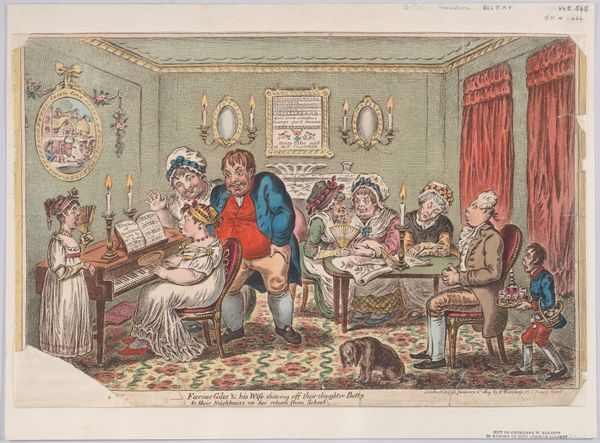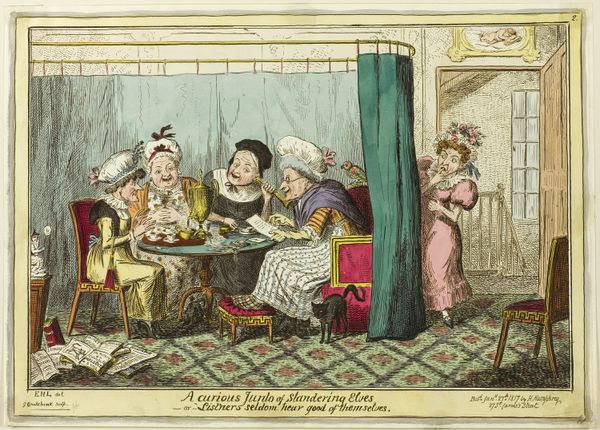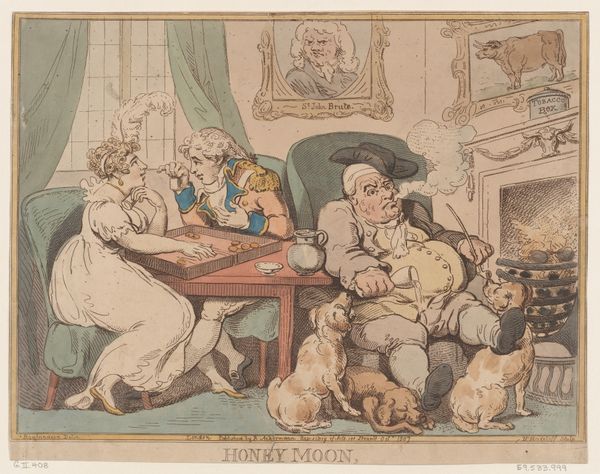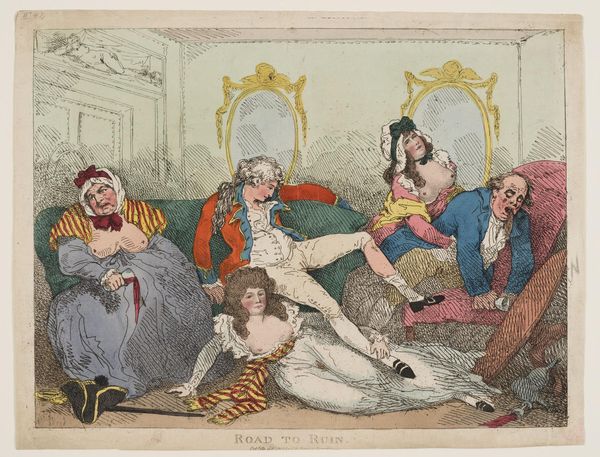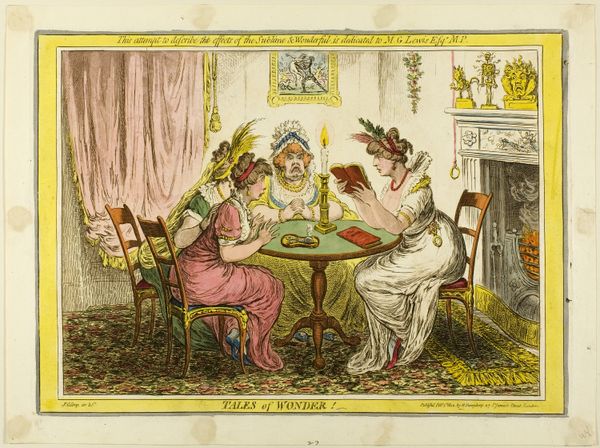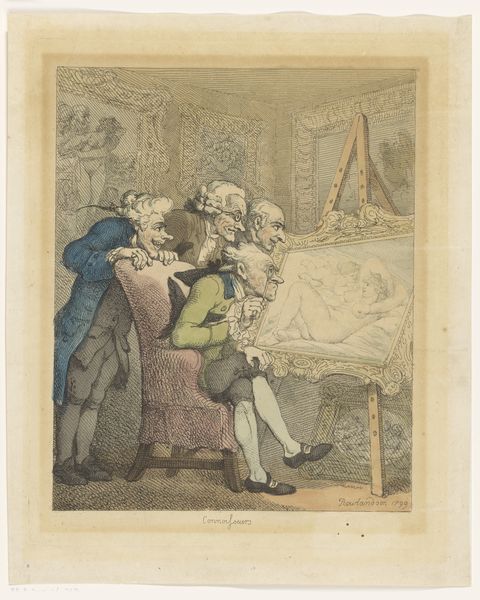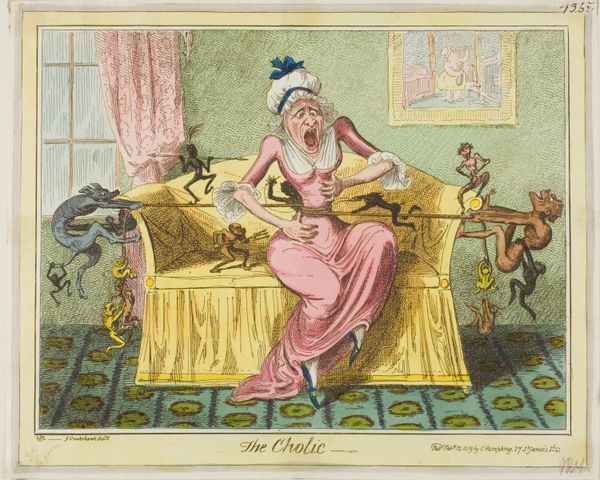
drawing, coloured-pencil, print, etching, paper
#
drawing
#
coloured-pencil
# print
#
etching
#
caricature
#
paper
#
coloured pencil
#
romanticism
#
genre-painting
#
watercolor
Dimensions: 242 × 342 mm (image); 250 × 350 mm (plate); 294 × 423 mm (sheet)
Copyright: Public Domain
Curator: Before us we have George Cruikshank's etching and coloured-pencil work, possibly from 1819, titled "Humming Birds, or A Dandy Trio," held at The Art Institute of Chicago. What catches your eye? Editor: Immediately, the sheer visual chaos and exaggerated postures! The asymmetry is compelling—it's as though the artist intentionally destabilized any sense of classical balance. Curator: Yes, the formal arrangement deviates considerably from convention. Note the artist’s masterful use of line, especially in defining the contours of the figures and their garments, creating a sense of movement, almost frenetic. The colours, though somewhat faded, still display the attention to detail Cruikshank paid to texture. Editor: Absolutely. The piece vibrates with the ethos of dandyism; its commitment to extravagant display, the almost comical overrefinement that signifies wealth, leisure, and artistic pursuit. I see symbols of social commentary on masculine performance. What do you make of the dog? Curator: The dog serves formally to balance the composition; it's placed strategically to counteract the lounging figure. The texture—created through intricate linework—defines its presence. Editor: It acts as a symbol, doesn't it, mirroring the dandy's affectations and dependence on luxury and performance, perhaps critiquing shallow social aspirations of the period through animal allegory? Also, observe the musical instruments—their symbolic representation of artistic endeavour, but perhaps skewed, even mocked, with the clarinet player shown reflected in the mirror... multiple times. Curator: An interesting point. We must consider the piece in relation to Romanticism. The formal rendering betrays the period. Editor: Agreed. It's Romanticism with an edge, infused with a critical eye. Looking closer at those paintings in the background—seemingly classical figures of leisure, idleness. This visual stacking underscores themes of appearance versus reality within a certain socio-economic group, am I right? Curator: It could be a semiotic code through the architecture. There is the arrangement of forms within that space that contribute to the caricature's commentary. Overall, what a rich object lesson. Editor: It certainly offers a sharp and engaging glimpse into Regency society through its flamboyant design and layered iconography. A dandyish deep dive.
Comments
No comments
Be the first to comment and join the conversation on the ultimate creative platform.
